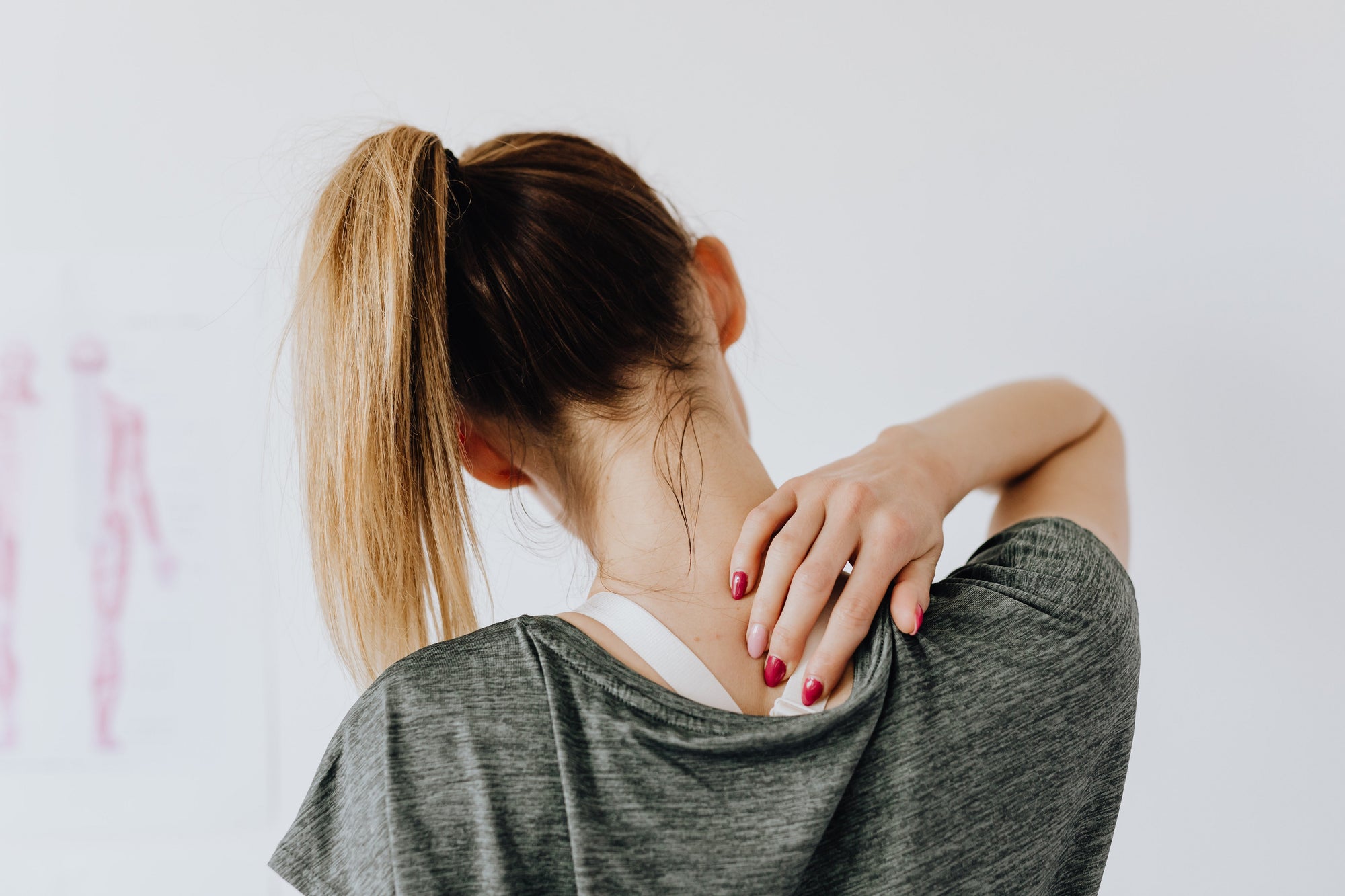Improve Muscle Pain Today!
Muscle soreness can come from different reasons, but the most common is an intense workout. Physical activity is usually healthy, even when you have achy muscles afterward. Still, finding ways to improve muscle pain and boost your health and wellness are always welcomed.

Delayed Onset Muscle Soreness (DOMS)
The American College of Sports says DOMS is sore muscles that come after you place an unaccustomed load or strain on your body from many different high-intensity physical activities, including:
- Running
- Aerobics
- Strength training
- Weight lifting
- Interval training
DOMS comes from small tears in your muscle fibers. It was once thought that it came from an increase of lactic acid in your body, but medically reviewed studies have shown this not to be true.
The onset of the muscle pain usually occurs 12-24 hours after completing the exercise, with the peak of pain up 24-72 hours after. The pain comes from causing the muscles to lengthen as force is applied. DOMS not only causes muscle soreness. You could notice one or more of the following signs and symptoms:
- Swelling in the sore area
- Stiffness and limited range of motion
- Tenderness when touched
- Weakness in the muscles
- High creatine kinase (CK) enzyme in the body
DOMS can also mean that you may have a sports injury if the muscle tissue pain is too severe and long-lasting. If the pain happens during the exercise, you should stop immediately. Sports injuries are common in women's and men's health.
While muscle pain usually comes from bodily strain during exercise, it can come from more serious health concerns, such as:
- Multiple sclerosis
- Psoriatic arthritis
- Rheumatoid arthritis
- Breast cancer
If you have DOMS, you can do some sore muscle treatments that will help ease your achy muscles.

Keeping Moving
Sports medicine recommends that you should keep moving to reduce DOMS. According to the College of Sports Medicine, tense muscles benefit from increased blood flow.
While going back to the intense exercise program may not be beneficial but engaging in light exercise for a few days while your muscles heal aids the repair. The more you move, the better your blood vessels and body may feel.
Stretch Those Muscles
While DOMS comes from stretched muscles, one way to improve pain and range of motion is through stretching. Light stretching prior to and after a workout helps mitigate the pain. Yoga stretches, lengthens and strengthens muscles slowly without too much strain.
Sore muscles can also benefit from a massage. A sports massage targets the area causing pain, and the masseuse is trained in working with those experiencing sports injuries or DOMS.
Drink Some Water
Fitness tips always include staying hydrated, but did you know that acute muscle soreness can help be prevented by drinking lots of water? The clear gold not only helps you during your workout but hours after exercise.
It can prevent DOMS and help reduce swelling if you're sore. The exact amount of water for your body depends on you and how much you sweat. In general, people need 6-8 glasses of water per day to stay hydrated. If you're exercising, the amount increases. Drinking lots of water can also aid in weight loss.
Eat Some Protein
One way to treat sore muscles is to eat protein before and after a workout. Protein helps strengthen muscle fibers to help prevent and speed up the recovery process. Aim to eat protein about 45 minutes after your workout.
A protein shake or bar is a common choice. However, other foods have protein that are entirely natural and easy to eat, such as cottage cheese, Greek yogurts, or peanut butter. Other foods after a workout to try are tart cherry juice, nuts, and sweet potatoes.
Foam Roll After Workout
Exercise physiologists recommend foam rollers to ease muscle strain. Foam rollers are light-weight round cylinders that facilitate a myofascial body massage.
It can be one of the best home remedies for muscle pain and easily added to your workout program. After your workout, take a few minutes to use the foam roller on the sore muscles.

Easy Home Remedies
Traditional ways of easing muscle pain and staying healthy include cold and heat therapy regimens. Cold therapy is applying an ice pack to the strained area or sitting in an ice bath to ease the pain.
You can mix in Epsom salt in the bath water for added relief. Soaking in a hot bath not only soothes stretched muscle fibers but does worlds for your mental health. You can even try a hot shower with the spray aimed directly on the sore area.
Magnesium Cream
Muscle soreness or DOMS may come from low magnesium levels in the body. Athletes have long used magnesium supplements to speed up recovery. The flow of magnesium and calcium in the muscles helps them relax, and exercise causes magnesium release. If the loss is too significant or you’re deficient, you may benefit from a high-quality magnesium topical cream.
Magnesium is a mineral vital for proper bone functioning, nerve and muscle function, and supporting the immune system. Men and women take magnesium supplements to help muscle recovery; it also can aid relaxation before bed to encourage sleep.
Sore muscles may cause sleep disruptions. Taking magnesium is helpful, but so is melatonin cream. Melatonin is the sleep chemical produced naturally in the body as the sun goes down. It signals it's time to get some rest, but achy muscles may need a boost for a more restful sleep.
Pain Relief Gel
A pain relief gel applied to the sore areas reduces muscle pain. Topical analgesic creams, gels, and sprays are used on the painful site to mitigate the pain.
When you build muscle, it's common to have some pain. The new normal seems to be that the workout isn't useful unless you're in pain afterward. But medical advice would tell you that you can get into shape without muscle soreness. But if you find that you are, remember to keep moving and stretching, and the pain will go away eventually



